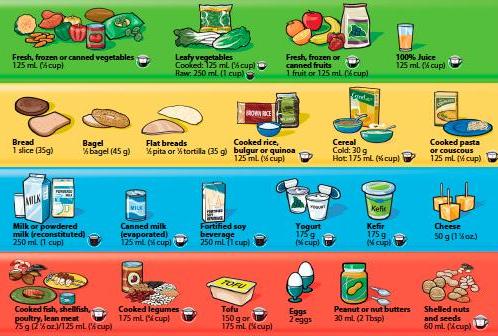The problem with the Canada Food Guide: it’s dominated by ultra-processed foods

 The Canada Food Guide is in need of an update and one of its staunchest critics believes that a big part of the problem lies in the current lack of attention paid to the dangers of “ultraprocessed” foods.
The Canada Food Guide is in need of an update and one of its staunchest critics believes that a big part of the problem lies in the current lack of attention paid to the dangers of “ultraprocessed” foods.
Last month, the Senate Committee on Social Affairs, Science and Technology released its report on obesity in Canada, stating, “There is an obesity crisis in this country. Canadians are paying for it with their wallets -and with their lives.”
Along with pushing for a national campaign to combat obesity and a tax on sugar-sweetened drinks, the Committee’s recommendations include a direct call to immediately and completely revise Canada’s Food Guide, saying that the guide needs to be more evidence-based, more meal-based, more focused on fresh whole foods and that it “make strong statements about restricting consumption of highly processed foods.”
This would be welcome news according to one of the guide’s biggest critics, Dr. Jean-Claude Moubarac, a specialist in public health and medical anthropology with the Faculty of Medicine at Université de Montréal, who sees ultra-processed foods as the real problem -these are the ready-to-eat and ready-to-heat products whose contents are often made with cheap ingredients and are high in calories while being low in fibre, vitamins and minerals found naturally in whole foods.
“It dominates the diet,” says Dr. Moubarac of processed food. In a study on consumption trends in Canada, Dr. Moubarac determined that the replacement of unprocessed or minimally processed foods by ready-to-consume ultra-processed foods was “the most important factor that has driven changes in Canadian dietary patterns between 1938 and 2011.”
Dr. Moubarac was also involved in crafting Brazil’s new food guide, one which the Senate report holds up as a shining example for Canada to follow. A major change to Brazil’s guide was to encourage public focus on meals and whole foods rather than on nutrients and food groups. Its new classification system, has only three categories -Group 1 includes all unprocessed and minimally processed foods, Group 2 includes the processed ingredients used in cooking such as flours, oils and spices, and Group 3 encompasses all the ultra-processed foods.
And Brazil’s guide advocates preparing meals from scratch and thinking about the social process of making food.
“It’s important that someone has cooked the food – that it’s handmade, and not factory made,” Moubarac says.
Criticism of Canada’s Food Guide is not a recent phenomenon, however, as many of the claims currently raised were voiced even before the guide was put in place in 2007.
In a 2006 commentary for the Canadian Medical Association Journal, Bill Jeffery, Canadian National Coordinator for the US-based Centre for Science in the Public Interest, and Ottawa specialist in obesity medicine, Dr. Yoni Freedhoff, argued that the guide gave inadequate recognition of the value of consuming more polyunsaturated fatty acids and whole-grain products, that its recommended serving sizes were “complicated and confusing” and that it contained insufficient warnings about the unhealthy consequences of eating high calorie, highly processed foods.
“It’s obesogenic,” said Freedhoff, who calculated that anyone who followed the food guide to the letter would end up taking in too many calories.
“What it means is that should anybody who is of average height and size follow Canada’s Food Guide, there is a very, very good chance it will lead to weight gain,” said Freedhoff.
In contrast to the equivalent in the United States, the Dietary Guidelines for Americans, which is reviewed and revised every five years, the Canada Food Guide, now going into its ninth year, does not have a definite timeline for review and is revised on an “as needed basis” according to Health Canada.

